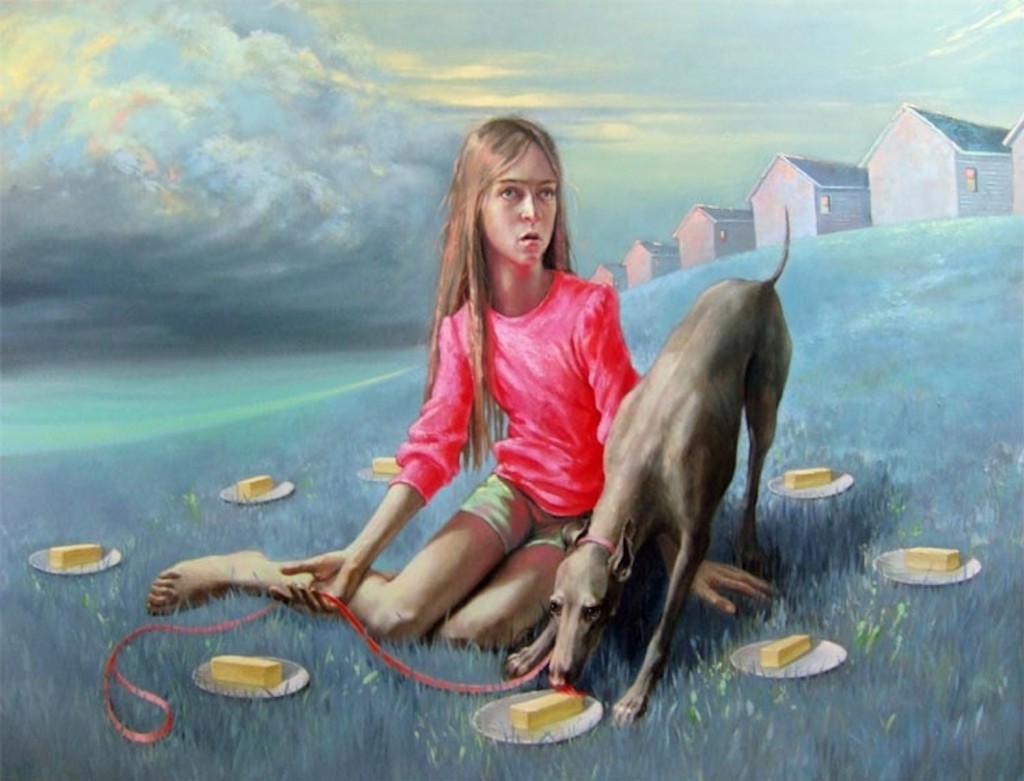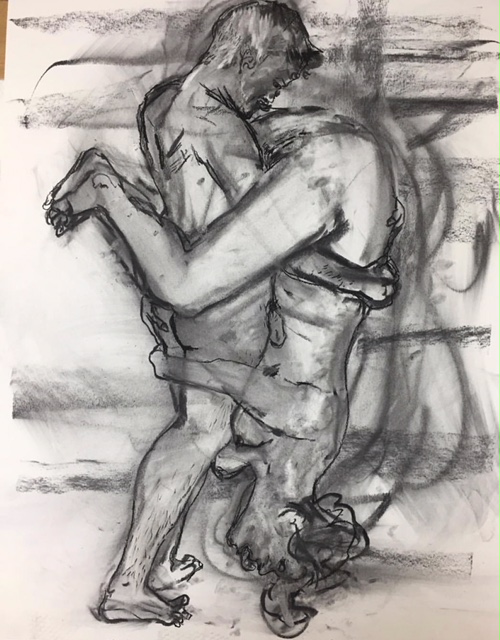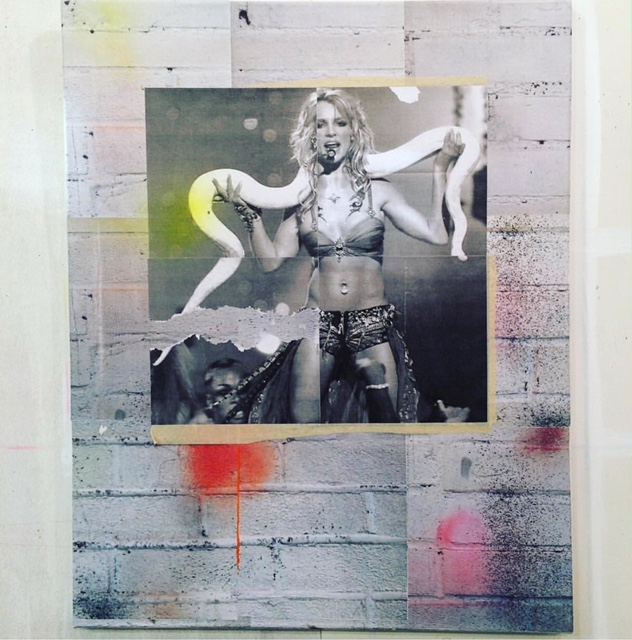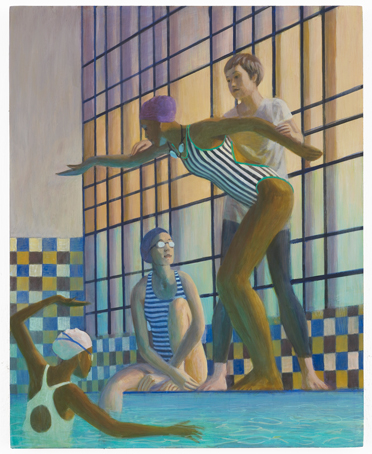
Like many people who like to look at art and write about it, I don't have time to go to galleries, I work too much. But I do find time to look at paintings on Instagram. This is my take on the work that I see there. It's never going to be the same as experiencing it live, my read is bound to be limited. This is a skim, a study of tendencies if you like.
There are many ways to find Art on Instagram. DM Simons posts work by interesting artists. Dailycollector is another account. I often search for the work of people I know, have known or vaguely know.
The recent change of guard at Artforum provoked ire from the art lovers on social media. Many complained that the outgoing administration used too much Frenchified "art-speak". Largely forgotten in their own country the Semiotexters have been hugely influential in the art and literature departments of American colleges for over thirty years. Their ideas have trickled down into art criticism. Their original position stems from Lacan’s theory that there is nothing in human development before, outside of, or without language. The study of books and paintings has become, on their watch, a hyper-sensitive examination of culture as a kind of code.
 What artists find mesmerizing about Lacan, (caught in a double loop of love and hate). Is his assertion that they can’t see the psychic monkey wrench in their own hand? The code isn’t always available to us. Only the analyst can read it. The central anxiety -- the thing that really bites them in the arse -- is invisible to them because it is suppressed by their own unconscious. Modern Artists don’t like this, they believe seeing that thing ("Gimme Das Ding"*) is central to their work. "This is what we do!"
What artists find mesmerizing about Lacan, (caught in a double loop of love and hate). Is his assertion that they can’t see the psychic monkey wrench in their own hand? The code isn’t always available to us. Only the analyst can read it. The central anxiety -- the thing that really bites them in the arse -- is invisible to them because it is suppressed by their own unconscious. Modern Artists don’t like this, they believe seeing that thing ("Gimme Das Ding"*) is central to their work. "This is what we do!"
It's a given in Modern Art that you can’t talk about all this naffed up stuff unless you’ve been to your own dark side. And for some it’s the main content of the work.
Secondly, and more particularly galling for the Americans, is the power put into the hands of the critic. The idea that all the weight of your guilt is only available to you through the Analyst/Theorist/Priest is way too Catholic and too top down for most Americans. They truly believe that they can make those assessments for themselves.
What artists love about Lacan and his followers is the visual nature of their models and themes. Lacan’s prophylactic eye is a deliciously perverse image. Gaston Bachelard’s beautiful work on the oneiric nature of the home, The Poetics of Space is a book for dreamers and painters.
My favorite Contemporary painting knows it’s primal urges. The Lesbian Eros of Angela Dufresnem (image above left). The Thanatos of the United States daubed in fake blood by Michael St John.

A typical St John painting looks like a section of hoarding covering a new construction. A picture of Britney Spears brandishing a white snake is posted on a painted ground. A woman holding a snake appears in many cultures around the world. It can signify menstrual psychic energy in Aboriginal myth. Minoan snake goddess figures represent renewal, fertility and the reborn dead. St John finds the mythic in the banal arguing that its power comes through even when it's chosen in total ignorance.
Dufresne's figures revel in a Sapphic paradise. A particularly great drawing has a butch lesbian holding a girl upside down about to give her cunnilingus. Dufresne performs the perfect act of sublimation, turning sexual fantasies into art realities.
But if Lacan is right and It's not really their "thing" that's underneath the work, driving it. What are they painting, and why? And if they're not qualified to do their own "work" why should we do it for them.
But perhaps I'm making too much of Contemporary painters loyalty to the idea of understanding their dark side. I've noticed a group of young painters acting as if revealing the unconscious is a stylistic thing. I call this "tendency" Snorealism.
Snorealism is like Surrealism but without the delimiting constraints of evoking anybody's dreams. Well painted but not so as to make too much of an accurate rendering, that doesn't seem to be the point. Neither does the suppressed unknown of the artist, as it might be imagined by Jung or Freud. In fact it seems to be painted in a knowing way to illustrate something not known.
Young artists like Benjamin Senior from Britain. A typical Senior Painting shows swimmers beside a pool. A dark skinned one is exhibiting the crawl to the others. We are not meant to read her skin colour as being significant. The retro feel of the bathing costumes and the wall length window and tiles seem more important. It's like a play set sometime after the War and before the Permissive Society when the world was a stagey self-conscious place.
Sports and exercise is a recurring theme. The odd positions that people adept when doing them can be read as theatricalized performance. Caitlin Albritton paints yoga girls whose tights are covered in snaggy Memphis-like decorative dashes. These painters often evoke some unspecific past. Robin F. William's painting, "Butter Circle" has a wistful '50s Life Magazine illustration feel, but by way of the '80s' colours. Andrew Wyeth done for MTV. (Image top of page.)
An earlier era siphoned through the '80s seems to be a recurring characteristic. It feels as if the people are wandering around in one of those gothic storylines that the Cure intercut between them playing the song in their pop videos.
DM Simons is an interesting artist with great taste and posts a lot of this kind of work, often alongside similar '20s and '30s paintings. It’s not all bad and some are very nice. My problem is the message from these young painters Is that deep urges are exploited for effect rather than critical heft. Consequently it looks more like illustration than painting.
But perhaps I'm being obtuse and Snorealism is deliberately designed to answer the unavailability of the Lacuna. It accepts that we don't know our actual motivation. And that frees up the movements of the subconscious to be used as a flavoring, a garnish. Nowadays the collectors don't need to peer into the abyss, an amuse bouche only needs a hint of Tartarus. - Millree Hughes
